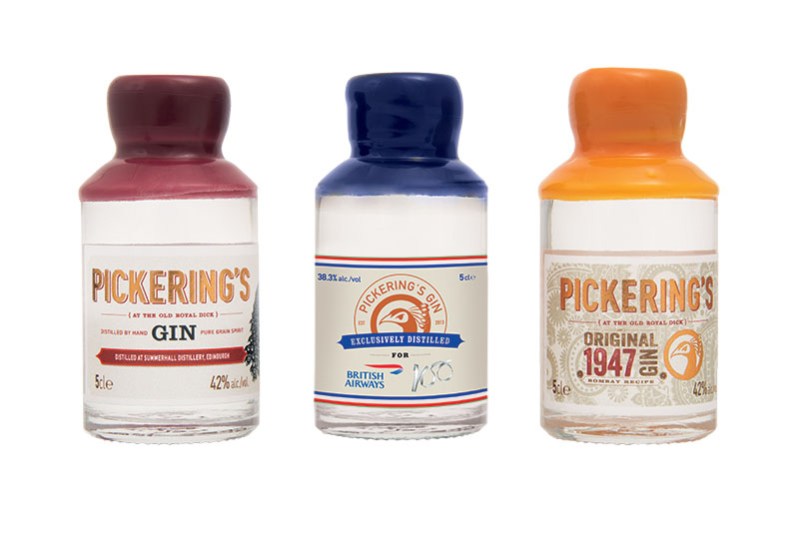
A decent cocktail might be the only thing that makes air travel tolerable these days, but thanks to a dulling of our taste buds at high altitudes, even a premium gin or bourbon can taste surprisingly bland. British Airways is working to solve that problem with an exclusive, high-potency gin designed to bring the sexy back to mid-flight G&Ts.
The British airline recently teamed up with makers at Edinburgh’s Pickering’s Gin to engineer a unique 10-botanical blend. The goal for the new Pickering’s British Airways Centenary Gin was to develop a flavor profile that eliminated so-called airplane “taste blindness” — one that worked equally well at high altitudes and on the ground. After numerous rounds of taste testing, they discovered lemon myrtle was vital to the recipe, adding the perfect amount of bold citrus and sweet. The blend also includes juniper, rose petals, and Scottish heather, plus some of Pickering’s signature botanicals like lemon, lime, cardamom, and cinnamon.

Science has revealed all the awful things that happen to the human body when flying, especially on long-haul flights. We get gassy, our skin takes a beating, and oxygen deprivation makes us tired. Plus, a Lufthansa study proved that our sense of taste dulls at higher altitudes with sweet and salty sensitivity dropping by up to 30%. Dry air, low pressure, plastic cups, and even the constant background roar of a jet engine can affect how we perceive taste. It’s a problem that most air travelers aren’t aware of, but it can make notoriously lackluster airline food (and the drinks that complement it) seem to taste even worse than it already does.
Thankfully, airlines have known about the issue for years, and have been quietly working to combat it. In 2017, Cathay Pacific partnered with Hong Kong Beer Co. to create Betsy, the world’s first high-altitude beer. To bolster the flavor, the makers carbonated the beer 10% higher than average and added Dragon Eye fruit from Hong Kong and English Fuggle hops.
The Pickering’s British Airways Centenary Gin is now available aboard all of the airline’s economy flights under four hours. It’ll be served as the go-to premium gin and tonic with Schweppes 1783 and a lemon wedge over ice. Passengers can also purchase it as part of a limited-edition gin flight gift pack on board all of the airline’s non-EU and long-haul flights.



